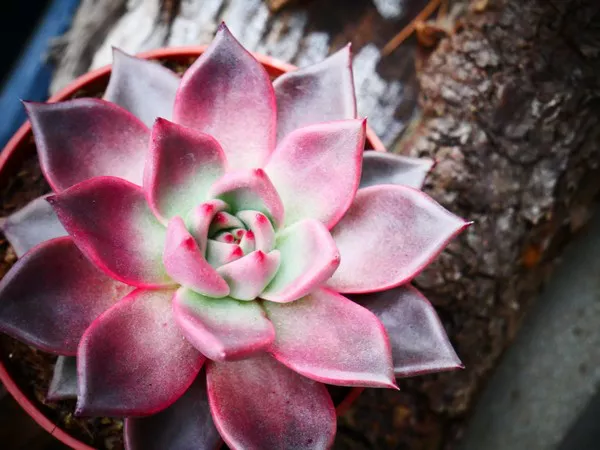Succulents, with their unique and captivating forms, have become popular choices for plant enthusiasts of all levels. Despite their reputation for being hardy and resilient, succulents have specific needs that must be met to ensure their survival and optimal growth.
1. Optimal Light Conditions: Nourishing Succulents with Sunshine
One of the primary factors influencing succulent survival is access to proper light conditions. Succulents, by nature, thrive in bright, indirect sunlight. Place your succulents in a location where they receive at least six hours of sunlight per day. A south-facing window is often ideal, providing the intense sunlight that many succulent species crave. If natural sunlight is limited, supplement with artificial grow lights designed for succulents. Keep in mind that different succulent varieties may have varying light preferences, so observe how your specific plants respond and adjust their placement accordingly.
2. Well-Draining Soil: The Foundation for Healthy Roots
Succulents are particularly sensitive to waterlogged soil, making the choice of the right soil crucial for their survival. Use a well-draining succulent or cactus mix or create your own by combining regular potting soil with perlite or coarse sand. The goal is to create a growing medium that allows water to flow through easily, preventing excess moisture around the roots. Well-draining soil not only aids in preventing root rot but also encourages the development of a robust root system, supporting overall succulent health.
3. Limited Watering: Balancing Hydration for Succulent Success
While it may seem counterintuitive, succulents do not require frequent watering to survive. In their native arid environments, they have adapted to store water in their leaves, stems, and roots. Water your succulents deeply but infrequently, allowing the soil to dry out completely between waterings. Overwatering is a common cause of succulent demise, leading to issues such as root rot. Establish a consistent watering schedule, adjusting based on factors like season, climate, and the specific needs of your succulents.
4. Adequate Air Circulation: Preventing Fungal Challenges
Succulents benefit from good air circulation, which helps prevent issues like fungal infections and promotes overall plant health. Ensure that your succulents are not crowded together, especially if grown indoors. Adequate spacing allows air to flow freely around the plants, reducing the risk of moisture buildup and fungal problems. In indoor settings, use fans or open windows periodically to improve ventilation. Outdoors, consider the placement of succulents in areas with natural airflow.
5. Appropriate Temperature Range: Mimicking Natural Habitats
Succulents are adapted to a wide range of temperatures, but providing conditions that mimic their natural habitats contributes to their survival and well-being. Keep your succulents in an environment with temperatures between 60°F and 80°F (15°C to 27°C) during the day. Most succulents can tolerate slightly cooler temperatures at night. Protect them from extreme temperature fluctuations and drafts, which can stress the plants. If growing succulents outdoors, be mindful of frost, as many succulents are not frost-tolerant.
6. Seasonal Adjustments: Aligning Care with Growth Cycles
Understanding the seasonal growth cycles of succulents is crucial for their survival. Typically, succulents are more active during the growing season, which is often in spring and summer, and experience a period of dormancy in fall and winter. During the growing season, succulents may require more water and can benefit from occasional fertilization. In contrast, reduce watering during the dormant period, allowing the plants to rest. Observing and adjusting your care routine based on these seasonal changes will support the natural rhythms of your succulents.
7. Balanced Fertilization: Supplementing Nutrients Wisely
While succulents are not heavy feeders, providing them with balanced nutrition is essential for their long-term survival and vitality. Fertilize your succulents sparingly during the growing season, typically in spring and summer. Use a diluted, well-balanced succulent fertilizer to avoid overfeeding, which can lead to salt buildup in the soil. Withhold fertilization during the dormant season, allowing the plants to rest. Always follow the manufacturer’s instructions regarding application rates, and monitor your succulents for any signs of nutrient deficiencies.
8. Pest Management: Vigilance for Succulent Well-being
Although succulents are generally resistant to pests, occasional challenges may arise, especially in indoor settings. Common pests include aphids, mealybugs, and spider mites. Regularly inspect your succulents for signs of pests, such as small insects, webbing, or stippling on leaves. If an infestation is detected, treat it promptly with insecticidal soap, neem oil, or a mixture of water and mild dish soap. Isolating new succulents for a few weeks after bringing them home can help prevent the spread of pests.
Conclusion
Creating the ideal environment for succulents to not only survive but thrive involves a thoughtful approach that considers their unique needs. From providing optimal light and well-draining soil to practicing limited watering and adjusting care based on seasonal changes, each element plays a crucial role in the overall well-being of these fascinating plants. Embrace the journey of succulent care, and with each attentive step, witness the resilience and beauty of these captivating botanical wonders. By mastering the essentials for succulent survival, you can create a thriving oasis of these unique plants in your indoor or outdoor spaces.


